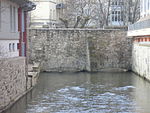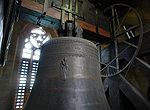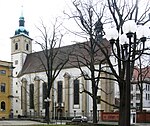Thüringer Aufbaubank
1992 establishments in GermanyBanks of GermanyCompanies based in Thuringia

The Thüringer Aufbaubank (TAB) is the central development institute of the Free State of Thuringia. It is a public institution and was founded in 1992. The first chairman of the board was Carl-Ludwig Wagner. The sole shareholder is the Free State. It has assumed the guarantor liability and the maintenance liability. Legal supervision of the bank lies with the Thuringian Ministry of Finance.
Excerpt from the Wikipedia article Thüringer Aufbaubank (License: CC BY-SA 3.0, Authors, Images).Thüringer Aufbaubank
Gorkistraße, Erfurt Brühlervorstadt
Geographical coordinates (GPS) Address Website External links Nearby Places Show on map
Geographical coordinates (GPS)
| Latitude | Longitude |
|---|---|
| N 50.971762 ° | E 11.018123 ° |
Address
Thüringer Aufbaubank
Gorkistraße 9
99084 Erfurt, Brühlervorstadt
Thuringia, Germany
Open on Google Maps










